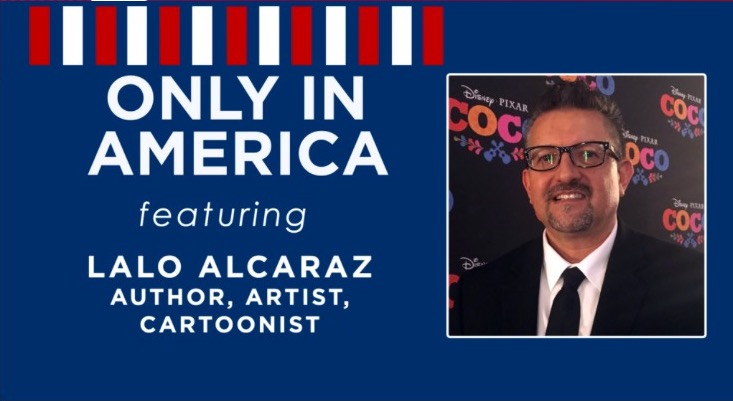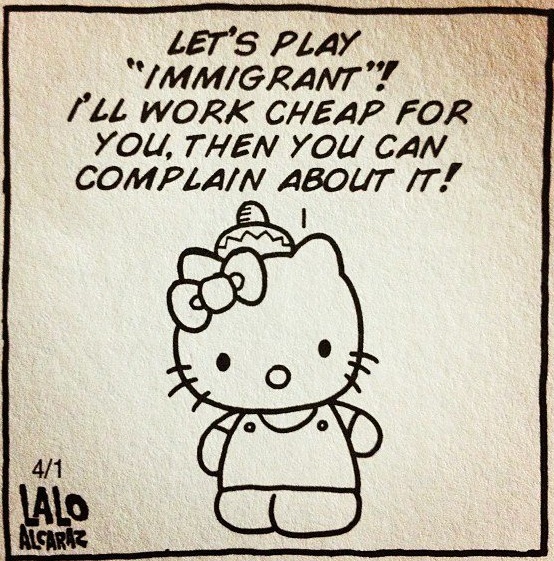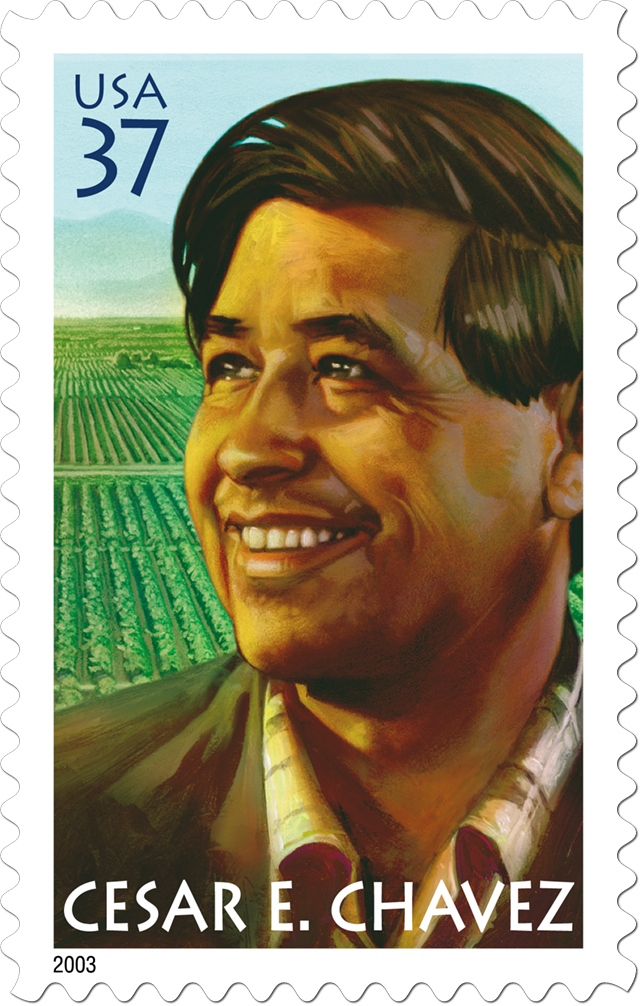bracero
POCHO Jefe @LaloAlcaraz: Melania is welcome at my house! (podcast)

It’s POCHO Jefe Lalo Alcaraz, guesting on the Only in America podcast with Ali Noorani. Here’s how they describe the episode:
Mas…POCHO Jefe @LaloAlcaraz: Melania is welcome at my house! (podcast)
Oral History: ‘I came to the U.S.A. in 1962 as a bracero’ (videos)
When labor was short in 1950s and 60s, the American and Mexican governments worked together to import laborers across the border to work as “braceros.”
The American Friends service Committee explains:
Mas…Oral History: ‘I came to the U.S.A. in 1962 as a bracero’ (videos)
Alvaro Huerta, Ph.D: The day my Mexican father met Cesar Chavez
Long live the farmworkers!
My late father, Salomón Chavez Huerta, first arrived in this country as an agricultural guest worker in the mid-1900s, during the Bracero Program. The Bracero Program represented a guest worker program between the United States and Mexico. From 1942 to 1964, the Mexican government exported an estimated 4.6 million Mexicans to meet this country’s labor shortage not only in the agricultural fields during two major wars (WWII and Korean War), but also in the railroad and mining sectors.
Like many braceros of his generation from rural Mexico, my father didn’t speak too much about the horrible working / housing conditions he endured while toiling in el norte. This included low pay, overcrowded housing, terrible food, limited legal rights, lack of freedom outside of the labor camps, racism, verbal / physical abuse and price gauging from company landlords / stores.
Mas…Alvaro Huerta, Ph.D: The day my Mexican father met Cesar Chavez
Sal and Isela’s song for a farmworker: ‘Sudor (Sweat)’ (video)
It’s hard work, but somebody’s got to do it. Califas balladeers Sal and Isela tell the story of a farmworker in Sudor (Sweat).
Mira los lyrics:
Mas…Sal and Isela’s song for a farmworker: ‘Sudor (Sweat)’ (video)
Dear President Donald Trump: Confessions of an Anchor Baby
Dear President Donald Trump:
Now that you’ve become our new emperor, I mean, the 45th President of the United States, I have a confession: I’m an “anchor baby.” Given that you represent the best white hope to “Make America Great Again!” I’m confessing in exchange to be pardoned for my birthright citizenship crime.
Honestly, I didn’t know that being born to Mexican immigrants on work visas violated the law or that pesky little thing called the 14th Amendment of the Constitution. If I would’ve known of your novel interpretation of our Constitution, I mean your Constitution, I would’ve pleaded in my mother’s womb to be aborted.
Oh, I forgot, Republicans don’t believe in abortions. Does the GOP make exceptions for brown fetuses?
Mas…Dear President Donald Trump: Confessions of an Anchor Baby
What does the farmworker see at the supermarket? (audio)
 You say tomato, I say tomahto, and when a migrant farmworker visits the produce aisle at a local supermarket he sees an entirely different picture.
You say tomato, I say tomahto, and when a migrant farmworker visits the produce aisle at a local supermarket he sees an entirely different picture.
PRI’s Monica Campbell reports:
In the produce aisle of a supermarket in Madera, in California’s rural Central Valley, Francisco surveys the fruits and vegetables on display in the produce aisle. He’s 40 years old and stocky. He’s also undocumented, and he asks to use his first name only.
Breaking: U.S. perverted peaceful Mexi-Drone robot plan
 (PNS reporting from LOS ANGELES) Newly-uncovered video confirms allegations that the U.S. Government stole and perverted POCHO Jefe-in-Chief Lalo Alcaraz’s 1998 plan to use remote-controlled robots (now called drones) for peaceful purposes.
(PNS reporting from LOS ANGELES) Newly-uncovered video confirms allegations that the U.S. Government stole and perverted POCHO Jefe-in-Chief Lalo Alcaraz’s 1998 plan to use remote-controlled robots (now called drones) for peaceful purposes.
The short informational piece, which Alcaraz made for the United States Department of Labor, aired only once — on local access cable TV program Illegal Interns. It was lost to the public until a VHS version was discovered in a storage locker in Boyle Heights last week.
Alcaraz’ documentary illustrates how remotely-controlled farm workers/braceros (called “cyber-braceros” or “cybraceros” for short in the quaint lingo of the 20th Century) could pick American crops without crossing America’s border.
Sadly, Alcaraz’ prophetic vision of remotely-controlled robots was perverted by Tio Sam and used for killing foreigners overseas and snooping on Americans at home.
The Labor Department video starts at 1:05 into the program:
‘Why Braceros?’ 1959 PR film says don’t be scared, it’s OK
Don’t worry, gringos, Mexican nationals won’t steal your job since all these “nationals” do is “stoop labor.” Also, explains the friendly Mexican Consul, they are “braceros” and not “wetbacks.”
The 19-minute film Why Braceros? was produced around 1959 on behalf of the Council of California Growers.
The Journal of Murketing explains:
It aims to tell viewers about “the benefits of the bracero program,” The Field Guide to Sponsored Films explains, “originally initiated by the United States in 1942 to alleviate the World War II labor shortage.” This was a “guest worker” program that made it okay for Mexican labor to be brought in seasonally to work on cotton farms and other manual jobs (“stoop labor,” it’s called in the films).
Mas…‘Why Braceros?’ 1959 PR film says don’t be scared, it’s OK



